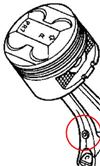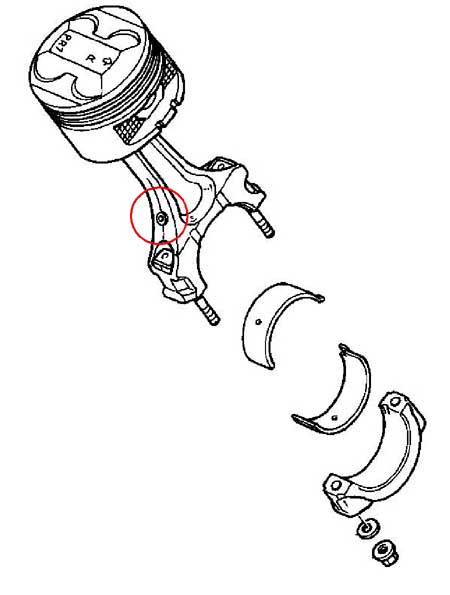Managing piston heat transfer through oil spraying
 There is a natural tendency for race engineers to try to improve the performance of engines - after all, this is precisely what many of us are paid to do. There are different ways to achieve this goal, but the primary focus for many of us is to increase the amount of energy converted from chemical energy in the fuel into kinetic energy. The rules impose various limits on us but, in general, if we are constrained on engine swept displacement as one of our development strategies, we will want to improve the breathing characteristics of the engine in order to admit and trap more fresh charge.
There is a natural tendency for race engineers to try to improve the performance of engines - after all, this is precisely what many of us are paid to do. There are different ways to achieve this goal, but the primary focus for many of us is to increase the amount of energy converted from chemical energy in the fuel into kinetic energy. The rules impose various limits on us but, in general, if we are constrained on engine swept displacement as one of our development strategies, we will want to improve the breathing characteristics of the engine in order to admit and trap more fresh charge.
If we improve the amount of energy that we convert, we will produce a greater amount of heat that we will need to manage, and consequently we will need to deal with higher component temperatures. Pistons are one of the components that 'suffer' in this way, and temperature can cause a number of problems. Where piston clearances are tight, the extra heat can cause the top land to scuff, and there will be a requirement to adjust the top land profile to cure this problem. While something of an annoyance, this problem is easily solved.
Of more pressing concern is the situation where piston temperatures become so high that we exceed the capabilities of the material from which it is made. Sometimes a material substitution can help here, but where we are perhaps already using a premium piston alloy that we aren't easily going to improve upon, we need to adopt a different strategy. A common solution to the problem of maintaining piston temperatures within acceptable boundaries is to spray the underside of the crown with oil. This is generally achieved by taking an oil feed from a gallery and providing a suitably aimed jet of oil to the area requiring cooling. However, this isn't always easily achieved.

Con rods can provide a solution here, as the big-end bearing is invariably fed with pressurised oil. It is common to direct some of this via drillings to the little end to ensure adequate lubrication, but we can also take a feed through the bearing to drillings along the flank of the rod and direct it to the areas of the piston crown that require cooling. Clearly, given the articulation of the rod relative to the crown of the piston, such jets will sweep out a line across the piston, but this is little different from the fixed jets that are generally fed from a gallery in the cylinder block.
This method has the advantage that no alterations are required to the cylinder block, where the design of the casting may not lend itself to the provision of machined areas, drillings and tapped holes. Depending on their design, it may even be possible to adapt existing con rods and bearings to provide the oil feeds required. The method has been successfully used in both high output series production engines and in racing. Where existing, normally aspirated engines have subsequently been turbocharged, this method might prove to be the easiest way to provide oil cooling to the pistons.
Fig. 1 - This con rod from the Honda NSX was remarkable for its pioneering use of titanium in roadcars. It also used through-rod piston cooling sprays, one of which is circled in this picture
Written by Wayne Ward